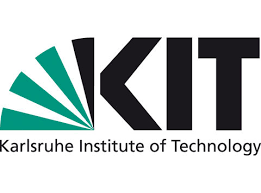Karlsruhe Institute of Technology: Light helps break down hormones
Micropollutants in water are often hormones that accumulate in the environment and can have a negative impact on people and animals. Researchers at the Karlsruhe Institute of Technology (KIT) and the Leibniz Institute for Surface Modification (IOM) in Leipzig have developed a process for the photocatalytic degradation of these impurities in the flow through polymer membranes and presented them in the journal Nature Nanotechnology . Exposure to light, which triggers a chemical reaction, breaks down steroid hormones on the titanium dioxide-coated membranes.
Wherever people live, hormones such as those used in contraceptive medicines and in agriculture find their way into wastewater. Steroid hormones such as sex hormones and corticosteroids can accumulate in the environment and adversely affect humans and animals by affecting behavioral development and reproductive capacity. For example, sex hormones can cause male fish to develop female sex characteristics. This makes it all the more important to remove not only other micropollutants but also hormones from the wastewater before they get back into the natural water cycle, from which drinking water comes in turn. “Supplying people with clean drinking water is one of the most important challenges of our time worldwide,” says Professor Andrea Iris Schäfer, Head of the Institute for Advanced Membrane Technology (IAMT) of the KIT. “Trace pollutants are a huge threat to our future because they affect our fertility and brain function.”
Inspiration from solar cell technology
Schäfer has been dealing with water treatment using nanofiltration for years. To do this, she uses polymer membranes with nanometer-sized pores. However, nanofiltration works at high pressure and therefore requires a lot of energy. In addition, micropollutants can accumulate in the polymeric membrane materials and gradually migrate into the filtered water. Even if the contaminants are completely removed, the result is a stream of concentrated pollutants that must be treated further.
Inspired by solar cell technology, which Professor Bryce S. Richards, who also works at KIT, is working on, Schäfer came up with the idea of coating polymer membranes with titanium dioxide and developing photocatalytic membranes: Photocatalytically active titanium dioxide nanoparticles are applied to microfiltration membranes whose pores are somewhat are greater than with nanofiltration. When irradiated with light, which triggers a chemical reaction, steroid hormones on the membranes are broken down. Now Schäfer has realized her idea with her team at the IAMT of the KIT and with colleagues at the Leibniz Institute for Surface Modification (IOM) in Leipzig and presented the new technology in the journal Nature Nanotechnology .
catalyst for water
“We have developed a catalyst for water, so to speak,” summarizes Schäfer. With the photocatalytic polymer membranes, it was possible to remove steroid hormones in continuous flow to such an extent that the analytical detection limit of four nanograms per liter was reached – the values even came pretty close to one nanogram per liter, which corresponds to the new WHO drinking water guidelines. The researchers are working to further develop their technology to reduce time and energy consumption and enable the use of natural light. Above all, however, further research is aimed at breaking down other pollutants with the help of photocatalysis, for example industrial chemicals such as per- and polyfluorinated alkyl substances (PFAS) or pesticides such as glyphosate. Another challenge is to scale up the technology.

